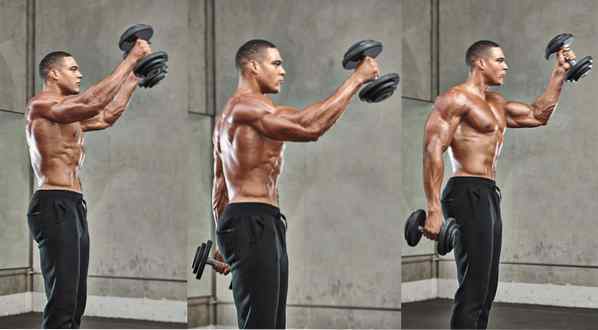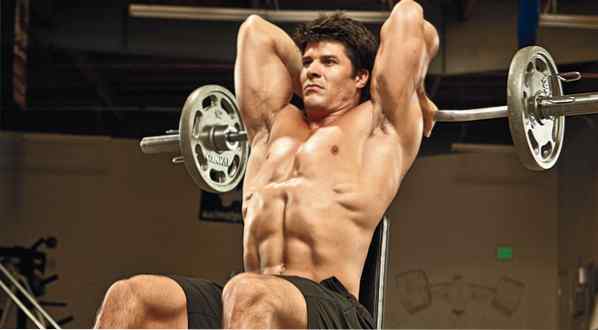
10 Tricks for Bigger, Healthier Shoulders

There is no denying it, great shoulders complete a physique. They give you width and top off that coveted V-taper. Your waist can be as small as can be, but without a killer pair of delts it will just not look right. Sadly, great or even good shoulders are rare these days and it is not due to lack of effort. If one takes a look around in most gyms, they'll find that most shoulders are slopped forward and/or injured. Rarely do your see a nice pair of cannonball delts so I made it my mission to change that sorry state of affairs.
In my opinion, the main reason that most trainees do not develop the shoulders they should have is because they are not fully balanced and therefore prone to injury as well as poor progress.
Here are 10 tricks to make your shoulders big and healthy at the same time.
1 of 10

milan2099 / Getty
Keep Them Healthy
This sounds obvious but is often neglected. If your shoulders are inflamed or injured, training will be very difficult since there is hardly an exercise where the shoulders are not involved. Even barbell squats become difficult as it's hard to hold bar with a set of inflamed delts.
The main reason for shoulder injuries is a structural imbalance; meaning that most trainees are overdeveloped in the front part of the shoulder and too weak in the rear. This gives them a weird hunchback look and inflames the biceps tendon. The test for balanced shoulders are wall slides.
Stand with your back against the wall, bring your arms to shoulder height, while bending the elbows about 90 degrees. Now simply move your arms up and down along the body. You should feel the shoulder blades moving downward. If you cannot perform wall slides properly, because your arms are coming forward, you are too stiff which brings us to point #2.
2 of 10

Heath Korvola / Getty
Keep It Flexible
Working on your flexibility in regards to chest and front delts is your first line of defense against a shoulder impingement. The easiest way to increase your ROM is the towel stretch. For this, you grab a towel with both hands and try to bring it over your head behind your body, while keeping the arms extended. At first, you might be struggling with this exercise, but over time you should be able to bring your hands closer together. Do 3×20 every night.
3 of 10

BSIP/UIG / Getty
Train the Cuff
The rotator cuffs deserve extra attention. Most people only realize they exist after they injure them. A good way to measure the strength of your cuff is to lay sideways on a bench or the floor and rotate a dumbbell upward against your hip. You should be able to move about 8% of your incline bench weight, so if you bench 200 lbs., 16-20 lbs. should be your range of strength.
If you are significantly weaker, you are on the fast track for an injury. The rotator cuff should be trained once a week with inwards and outwards rotations. It takes 5 minutes, and will save you a lot of grievances down the road.
4 of 10

Per Bernal
Don't Do Front Raises
This will most likely tick off a few people but in my humble opinion there is no need to add any more direct work for the anterior deltoid as it gets plenty of stimulation via every press and pull you do.
5 of 10

Per Bernal
Start From the Back
This goes in line with point #1, but since the rear delt is woefully underdeveloped by many trainees, I cannot overemphasize this point. Always start your shoulder workout with rear delt exercises, such as rear delt flyes, uncrossovers or j-pulls. Setting up your workout in such a manner will create symmetry and keep you healthy. Some of the greatest physiques in the sport got their exclamation mark by having rear delts that capped off their shoulders and gave them a 3-D look.
6 of 10

Per Bernal / M+F Magazine
Learn the Clean and Press
If you have somebody qualified to teach you, the clean and press is a great tool to stimulate the nervous system. Doing a couple sets at the start of your shoulder workout will greatly improve the effectiveness of the actual hypertrophy work. There is no need to go heavy, think 4 sets of 8 at 60% of the weight you would be using for overhead presses.
7 of 10

Pavel Ythjall
Sit Down
The next time you are doing overhead presses, do them seated on the floor in the power rack, pins at the lowest level. The added balancing effort will make your delts work so much harder that you'll might have to reduce the weight by 40%.
8 of 10

Per Bernal / M+F Magazine
Do Superman Presses
I found these types of presses extremely helpful when developing roundness in the delts. They are done as follows: set the incline bench at 30 or 45 degrees and lay with your chest on the bench. Now grab a pair of very light dumbbells and press perpendicular. There is nothing more humbling than struggling with 12 lbs. dumbbells.
9 of 10

Fat Tony / Getty
Watch Your Elbows
You always want to have your elbows directly under the bar so you can create tension on the delt from the start. Do not bend the wrists backward, always keep them in a neutral position. Along the same line of thought, when you do side raises always focus on moving the elbows before the wrist otherwise you'll be performing shrugs.
10 of 10

Emir Memedovski / Getty
Train Them Often
Shoulders can handle a lot of volume, so if yours are lagging hit them twice a week.



Nadie ha comentado sobre este artículo todavía.